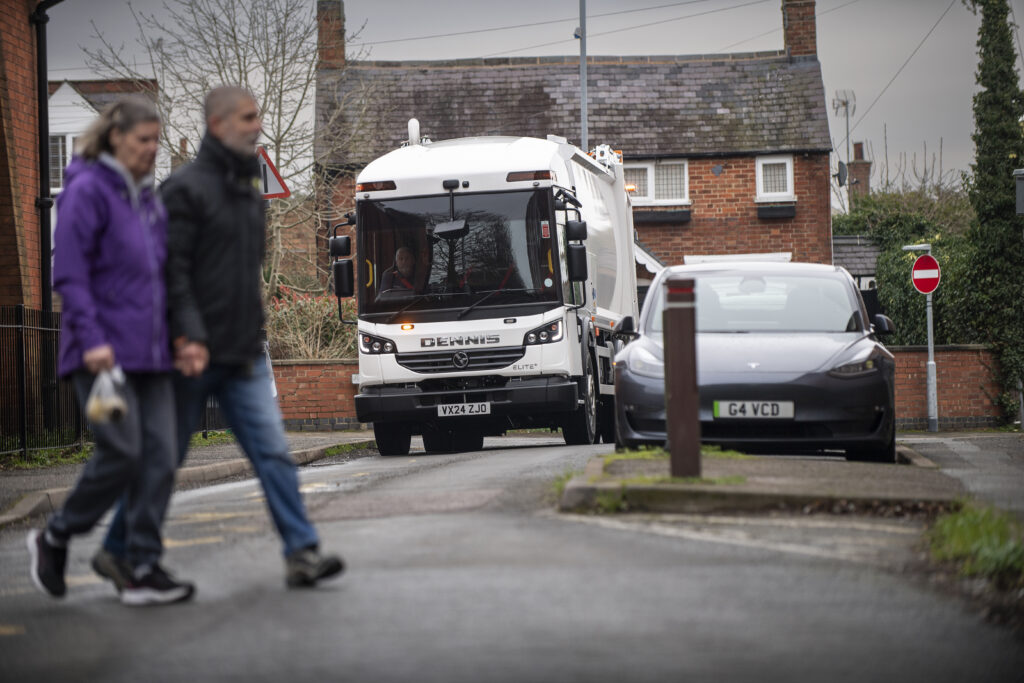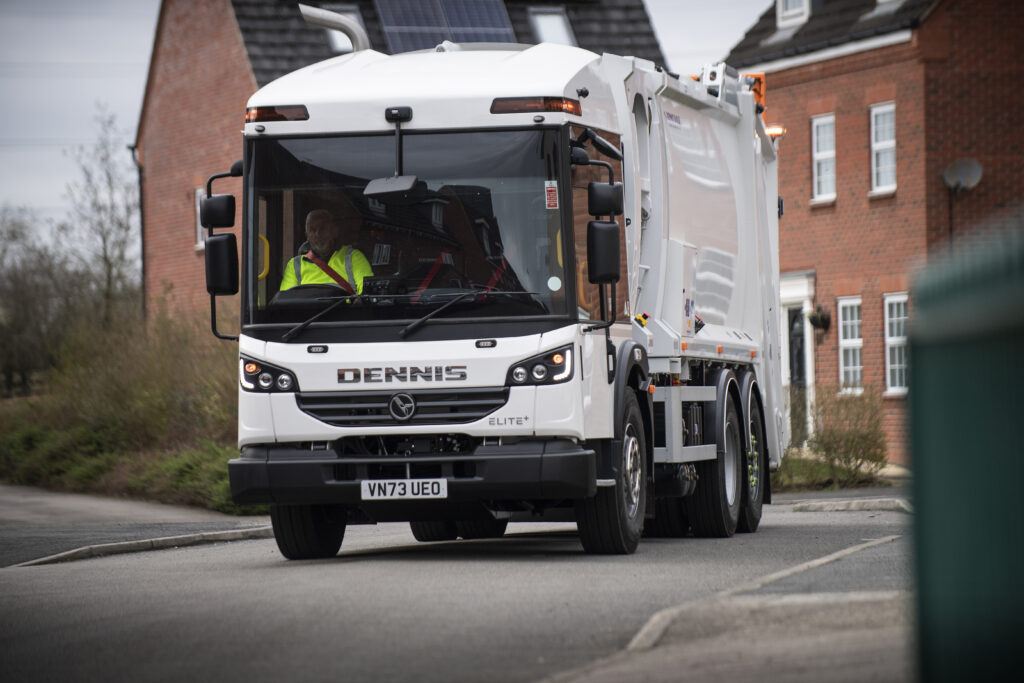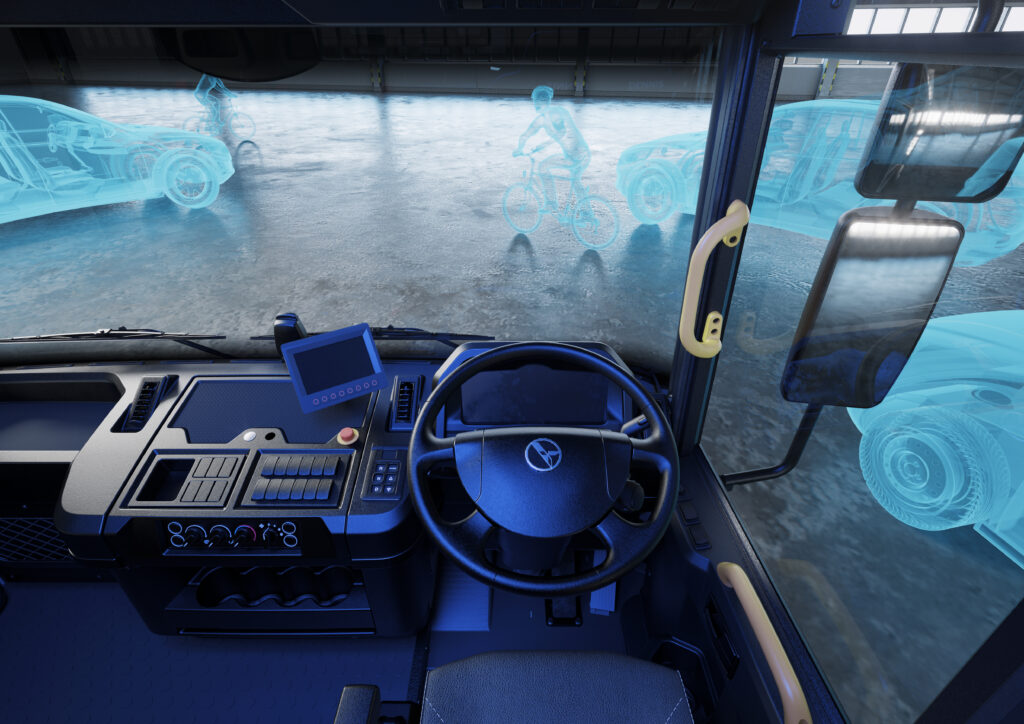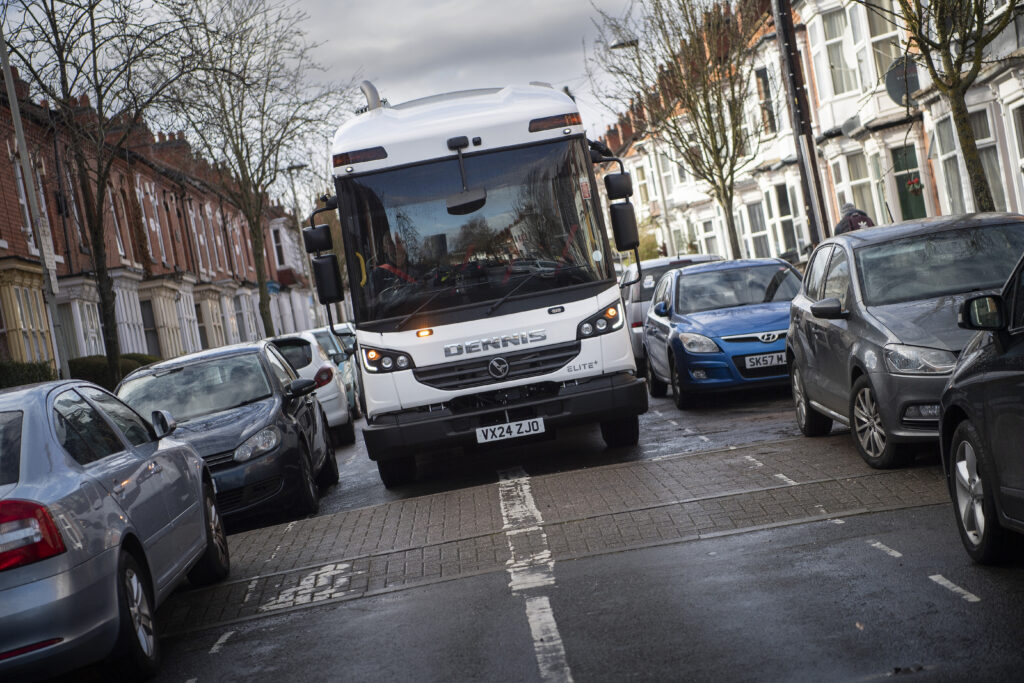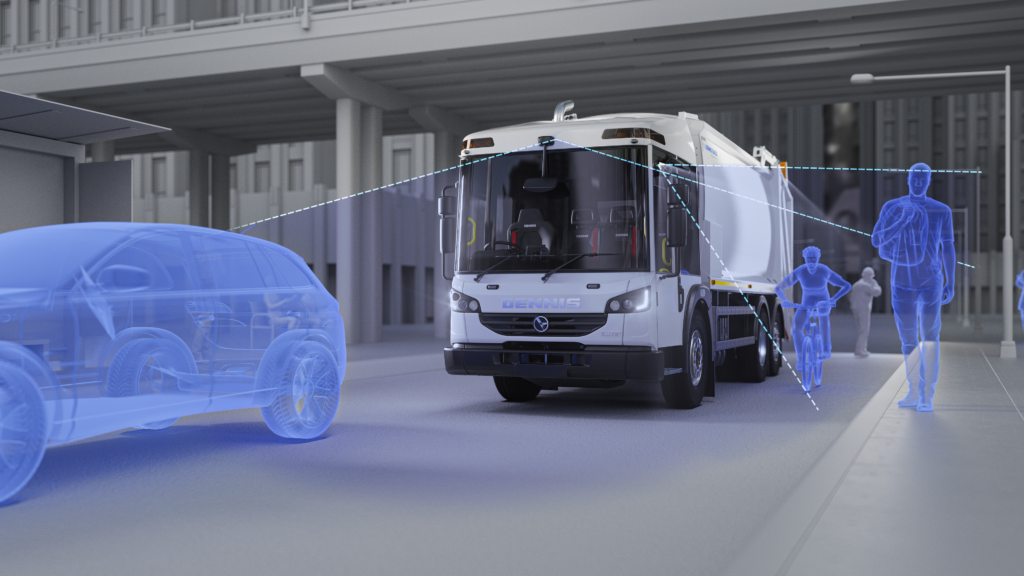London’s Direct Vision Standard, which aims to reduce lethal blind spots in HGVs to protect vulnerable road users, will tighten in October, writes Dennis Eagle’s Lee Rowland.
The deadline for the new Direct Vision Standard (DVS) requirements for HGVs in London is fast approaching. Starting on October 28, RCVs will need a three-star DVS rating from Transport for London (TfL) to receive a permit to operate on the streets of Greater London. At midnight on October 27, safety permits for vehicles rated from zero to two stars will expire. To continue operating, these two and zero-star trucks must have a Progressive Safe System retrofitted.
Authorities and businesses that use RCVs with a star rating of three to five will receive a 10-year permit. The Dennis Eagle’s Elite+ cab, which has received the top DVS rating.
‘We pride ourselves on our commitment to safety innovation, and we are pioneers in Direct Vision cab design,’ says Richard Taylor, Sales and Marketing Director at Dennis Eagle. ‘We were delighted to receive a five-star DVS rating, which we had already worked to achieve with the Elite 6 before the Elite+. It gives our customers peace of mind that they are operating best-in-class RCVs, keeping not only pedestrians and cyclists safe but also the driver and crew of the vehicle.’
But what will the EU’s General Safety Requirements (GSR) change mean for RCV operators, and why is investing in vehicles that set the standard in protecting vulnerable road users critical as the UK ramps up its road safety measures?
Why GSR change is coming
Since March 2021, GSR has been a key part of the Mayor of London’s strategy to eliminate all transport-related deaths and serious injuries from the city’s transport network by 2041. London’s ambition aligns with the EU’s Vision Zero, set out by the EU Road Safety Policy Framework to achieve zero deaths and injuries on Europe’s roads by 2050.
In May this year, TfL published its 2023 road casualty data, which showed a 6% decline in the number of people killed on London’s roads last year, from 102 to 95, the second-lowest figure on record. However, much work still needs to be done, with 2,981 people walking, cycling and motorcycling accounting for 80% of all people killed or seriously injured in 2023.
‘We’re making significant progress, but we know there is more work to do to eliminate deaths and serious injuries from London’s roads,’ said Dr Will Norman, London’s Walking and Cycling Commissioner. ‘The Mayor is committed to making it safer and easier for people to walk and cycle around our city, which is why we are expanding our safer speed programme, tightening the Direct Vision Safety standard for HGVs and working with the boroughs to deliver high-quality cycle routes as we work to build a greener, safer London for everyone.’
Implemented by the Mayor of London, TfL, and the Metropolitan Police, London’s Vision Zero has five critical pillars: Safe Speeds, Safe Streets, Safe Behaviours, Post-Collision Response, and, most crucially for RCV manufacturers and operators, Safe Vehicles.
As TfL states, the Safe Vehicles pillar aims to ‘reduce the risk posed by the most dangerous vehicles by introducing a world-leading Bus Safety Standard across London’s entire bus fleet and a new Direct Vision Standard for Heavy Goods Vehicles’.
Vehicles weighing over 12 tonnes currently require a safety permit before entering Greater London. However, if the vehicle is rated one star, it must install a Progressive Safe System before entering. From October 28, the permit’s star rating will increase to three. Therefore, vehicles with two stars or fewer are required to retrofit the Progressive Safe System.
Developed by regulatory bodies, policymakers, academics, the freight industry, and Europe’s most prominent HGV manufacturers, DVS aligns with the EU’s General & Pedestrian Safety Regulation. Introduced in 2022, GSR is designed to protect pedestrians, cyclists, and drivers by reducing human error. The EU estimates GSR, which requires manufacturers to design driver-assistant solutions that protect vulnerable road users, will save 25,000 lives by 2038.
‘At Dennis Eagle, we share the same ambitions as the City of London and the GSR,’ says Richard. ‘We have long championed innovation to improve driver awareness and, ultimately, create a safer environment for pedestrians and cyclists.’
Dennis Eagle’s safety solutions
A study by TfL, Arup, and the University of Leeds PAC Lab used a simulated driving environment to explore the road safety benefits of direct vision. It found that driving a conventional, non-direct-vision vehicle resulted in a 23% increase in pedestrian collisions. It also found that distracted drivers in Direct-Vision vehicles reacted faster than drivers paying attention in Low-Vision vehicles.
For these reasons, Dennis Eagle puts Direct Vision at the forefront of its safety strategy. ‘We confidently believe that our Elite+ offers the best Direct Vision of any RCV,’ says Richard. ‘We’ve had our vehicles independently rated by TfL, and the results showed that our predecessor to the Elite+, the Elite 6, gave drivers the best Direct Vision in the UK. Now, the Elite+ enhances that further.’
Innovations in the Elite+ include three individual seats for crew members, allowing the outer seat to be recessed so that the driver has improved near-side vision. Large rear windows on either side of the cab also improve direct vision. While the safety of vulnerable road users is paramount, Richard says Dennis Eagle’s safety innovations are also designed to ensure drivers feel confident and secure.
‘As well as working hard to set the standard in RCV safety, we’re also committed to providing a world-class working environment for drivers and crews,’ he comments. ‘The Elite+ is designed with the people who work with it at its heart. Maintaining and operating is more convenient, more comfortable, and safer than ever.
‘We’ve done this in several ways. The controls are more user-friendly, the switch bank is intuitively arranged, and the steering column and seats are more adjustable so drivers and crew can find the ideal position for themselves. We’ve also lowered the entry to the cab to just 495mm from the ground, improving the ease and safety of getting in and out. We’ve also positioned the driving seat low so drivers can use direct eye contact with other road users, which studies show improve safety for the RCV driver and other drivers.’
Dennis Eagle’s commitment to improving the safety of refuse collection vehicles was recognised internationally in April when it became a member of Together for Safer Roads, a US non-governmental organisation dedicated to advancing road safety through cross-sector collaboration and technological innovation. ‘Our dedication to producing vehicles with low blind zones aligns seamlessly with TSR’s vision, and we look forward to contributing to advancing fleet safety on a global scale,’ said Geoff Rigg, President at Dennis Eagle North America.
As UK regulations such as DVS change to offer more support to vulnerable road users, Dennis Eagle remains the standard bearer for RCV safety.
